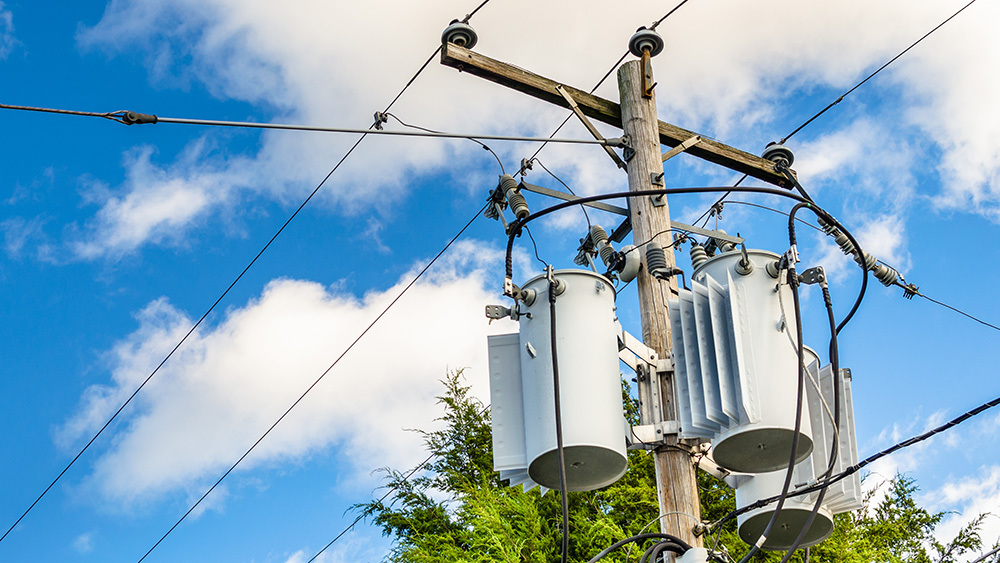
Dr. Chanan Singh and doctoral student Arun Karngala from the Department of Electrical and Computer Engineering at Texas A&M University are working to develop a reliability framework for the distribution system so that utility companies can be better prepared for uncertainties that may arise. Singh is a Regents Professor, the Irma Runyon Chair Professor and University Distinguished Professor.
By developing these models and methods to perform the analysis of the distribution level of the power grid, adverse effects of localized weather events or equipment failure can potentially be prevented.
The researchers’ framework can be used to test the systemwide impact of installing rooftop solar and energy storage by the customers in the distribution system. “We found that with 40% of customers installing solar capacity, that amounts to 1.5 times the peak demand of the respective households,” Karngala explained. “With sufficient energy storage systems, the reliability indices measured significant improvements. For example, the system average interruption frequency index was improved by 50%, the system average interruption duration index was improved by 70% and the customer average interruption duration index was improved by 45%.”
Karngala said that this framework can also be used to decide the capacity of solar rooftop installation. “If the installed solar capacity is increased from one time the peak demand to two times the peak demand, the reliability indices show steady improvement. The improvement in indices tapers off after the installed solar capacity is increased more than 2.5 times the peak demand.”
Performing reliability studies can help create business cases for purchasing such storage and ongoing research on storage technologies is helping to provide more affordable and reliable alternatives.
The research team is focused on the analysis and reliability at the distribution level as it is the most vulnerable of all stages of power allocation and therefore can cause the most trouble for customers. Further, unlike high-level sectors of the power grid – such as power generation and transmission – that have existing methods of analysis and procedures to ensure that the reliability will be maintained in the presence of uncertainties at specified levels, the distribution level generally does not have such standards.
Most independent system operators (ISOs) ensure they have enough power generation reserve so that if an unexpected issue arises (e.g., transmission line failure, generator failure, the load being higher than forecasted, etc.) resulting in the total load not being supplied, the load can be adjusted so that it is not lost completely for all customers. Many ISOs use criteria that ensure that, on average, this load curtailment would not occur more than one day in 10 years. Such standards are not typically used at the distribution level.
This work was published in IEEE Transactions on Sustainable Energy in January.
“The winter storm event that happened recently in Texas was of a different nature that spanned the entire state,” Singh said. “But extreme weather can be in a variety of forms. For example, you can have tornadoes or hurricanes where the effect is not statewide but instead, more limited areas are affected. We believe that in those situations these models and the tools that they will provide to us to manage the system will enhance the reliability of the distribution system because you don’t have to rely only on the power that is coming from the grid, but also from other local sources such as solar and perhaps wind.”
One challenge that the team is facing is that there are many different kinds of generating systems being integrated into distribution systems that must be accounted for in this framework analysis. As Karngala explained, distribution systems previously were considered the only consumers of energy, but today there are newer technologies and many more distributed energy resources coming into the distribution system such as solar panels, wind generation and storage.
“The exciting part about working on distribution systems is that these are in a phase of change now,” Karngala said. “These are changing from traditional systems to much more advanced systems, and we are in that transition phase where we need to develop models and methodologies.”
Ultimately, the team is looking to build a comprehensive framework of reliability analysis where approaches such as demand response, price strategies and operational strategies can be included and be expanded upon as the power grid evolves.
“There is no shortage of projects that can be developed around this framework as many models, methods and operational strategies can be included in the reliability evaluation,” Karngala said.
This work is funded by the Department of Energy as part of the U.S.-India Collaborative for Smart Distribution System with Storage project.
Strengths in energy at TEES
The Texas A&M Engineering Experiment Station's energy market segment features innovative solutions to obstacles in energy production, processing and consumption. Our strengths include natural gas, fossil and non-fossil-based technologies, energy economics and multi-scale energy systems engineering; upstream petroleum engineering technology through industry partnerships; energy consumption optimization in commercial and industrial building operations; power system infrastructure integration with transportation to create energy ecosystems; and turbomachinery performance and reliability in rotor dynamics, acoustics, seals, tribology, couplings, computational and experimental fluid dynamics, heat transfer, torsional vibrations, materials and finite element analysis.
